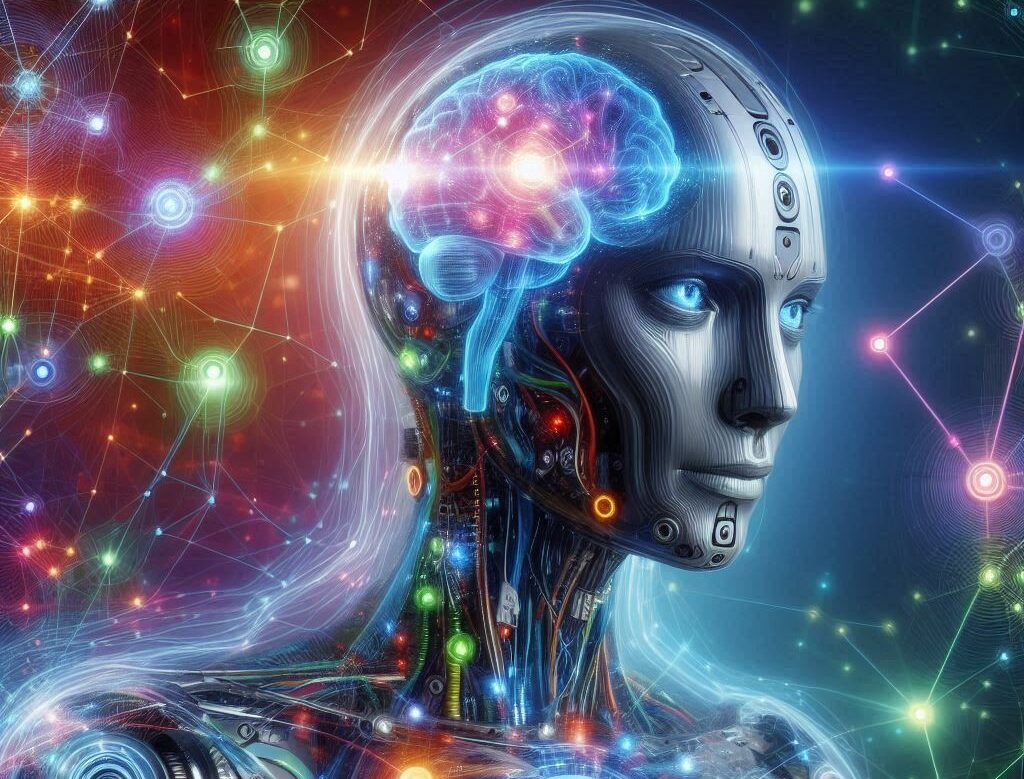Artificial Intelligence (AI) has become an integral part of our daily lives, powering everything from voice assistants to recommendation systems. At the heart of many AI applications lies a powerful concept: Neural Networks. These intricate systems, inspired by the human brain, have revolutionized the field of machine learning and continue to push the boundaries of what’s possible in AI.
In this comprehensive guide, we’ll embark on a journey through the fascinating world of Neural Networks. We’ll start with the basics, gradually progressing to more advanced concepts, and explore practical applications along the way. Whether you’re a curious beginner or an aspiring AI practitioner, this article will provide you with a solid foundation and insights into the cutting-edge developments in Neural Networks.
What are Neural Networks?
Neural Networks, also known as Artificial Neural Networks (ANNs), are computing systems designed to mimic the way the human brain processes information. Just as our brains consist of interconnected neurons, ANNs are composed of artificial neurons (or nodes) organized in layers. These networks can learn from data, recognize patterns, and make decisions with a level of complexity that often surpasses traditional algorithmic approaches.
Key Components of a Neural Network
- Input Layer: This is where the network receives raw data or features.
- Hidden Layers: One or more layers between the input and output, where most of the computation occurs.
- Output Layer: Produces the final result or prediction.
- Neurons (Nodes): The basic units that process and transmit information.
- Weights: Connections between neurons, representing the strength of the relationship.
- Activation Functions: Mathematical operations that determine the output of a neuron.
The Evolution of Neural Networks
Neural Networks have come a long way since their inception. Let’s take a brief look at their historical development:
- 1943: Warren McCulloch and Walter Pitts create a computational model for neural networks.
- 1958: Frank Rosenblatt develops the perceptron, a simple neural network.
- 1969: Marvin Minsky and Seymour Papert publish “Perceptrons,” highlighting limitations of simple neural networks.
- 1986: Backpropagation algorithm is popularized, allowing more efficient training of multi-layer networks.
- 2006: Geoffrey Hinton introduces deep learning, revitalizing interest in neural networks.
- 2012: AlexNet wins the ImageNet competition, marking a breakthrough in computer vision.
- Present: Continuous advancements in architectures, training methods, and applications.
Types of Neural Networks
As the field has evolved, various types of Neural Networks have emerged, each suited for different tasks:
- Feedforward Neural Networks (FNN): The simplest type, where information flows in one direction.
- Convolutional Neural Networks (CNN): Specialized for processing grid-like data, such as images.
- Recurrent Neural Networks (RNN): Designed for sequential data, with the ability to maintain internal state.
- Long Short-Term Memory (LSTM): A type of RNN that can learn long-term dependencies.
- Generative Adversarial Networks (GAN): Two neural networks competing to generate new, synthetic instances of data.
- Transformer Networks: Attention-based models, particularly effective for natural language processing tasks.
How Neural Networks Learn
The power of Neural Networks lies in their ability to learn from data. This process, known as training, involves adjusting the weights between neurons to minimize the difference between the network’s predictions and the actual outcomes.
Key Concepts in Neural Network Training
- Loss Function: Measures the difference between predicted and actual outputs.
- Gradient Descent: An optimization algorithm used to minimize the loss function.
- Backpropagation: The process of calculating gradients and updating weights.
- Epochs: The number of times the entire dataset is passed through the network during training.
- Batch Size: The number of training examples used in one iteration.
- Learning Rate: Determines the step size at each iteration while moving toward a minimum of the loss function.
Advanced Concepts in Neural Networks
As we delve deeper into the world of Neural Networks, several advanced concepts come into play:
1. Transfer Learning
Transfer Learning is a technique where a model developed for one task is reused as the starting point for a model on a second task. This approach can significantly reduce training time and improve performance, especially when working with limited datasets.
2. Attention Mechanisms
Attention mechanisms allow neural networks to focus on specific parts of the input when producing an output. This concept has been particularly revolutionary in natural language processing and computer vision tasks.
3. Neural Architecture Search (NAS)
NAS is an automated process for designing optimal neural network architectures. It uses machine learning techniques to explore and evaluate different network structures, potentially discovering more efficient and effective designs than those created by human experts.
4. Explainable AI (XAI)
As neural networks become more complex, understanding their decision-making process becomes crucial. XAI aims to make the predictions of neural networks more interpretable and transparent.
5. Federated Learning
This approach allows for training models on distributed datasets without sharing the raw data. It’s particularly useful in scenarios where data privacy is a concern.
Practical Applications of Neural Networks
Neural Networks have found applications across a wide range of industries and domains:
- Computer Vision: Object detection, facial recognition, image classification.
- Natural Language Processing: Machine translation, sentiment analysis, chatbots.
- Speech Recognition: Voice assistants, transcription services.
- Healthcare: Disease diagnosis, drug discovery, medical image analysis.
- Finance: Fraud detection, stock market prediction, risk assessment.
- Autonomous Vehicles: Object detection, path planning, decision making.
- Gaming: AI opponents, procedural content generation.
- Recommender Systems: Personalized content recommendations on streaming platforms and e-commerce sites.
Challenges and Future Directions
While Neural Networks have achieved remarkable successes, several challenges and areas for improvement remain:
- Data Hunger: Many neural network models require large amounts of labeled data for training.
- Computational Resources: Training complex models often requires significant computational power.
- Interpretability: Understanding the decision-making process of deep neural networks can be challenging.
- Adversarial Attacks: Neural networks can be vulnerable to carefully crafted inputs designed to fool them.
- Ethical Concerns: The use of AI in decision-making raises important ethical questions about fairness and bias.
Looking to the future, researchers are exploring several promising directions:
- Neuromorphic Computing: Developing hardware that more closely mimics the structure and function of biological neural networks.
- Quantum Neural Networks: Leveraging quantum computing to potentially overcome limitations of classical neural networks.
- Continual Learning: Creating models that can learn new tasks without forgetting previously learned ones.
- Energy-Efficient AI: Developing more environmentally friendly approaches to training and deploying neural networks.
Programming Neural Networks
Now that we’ve covered the theory, let’s look at how to implement Neural Networks in popular programming languages.
Python with TensorFlow
Python is one of the most popular languages for AI development, and TensorFlow is a widely-used library for building neural networks. Here’s a simple example of creating a feedforward neural network:
Python
import tensorflow as tf
from tensorflow.keras import layers, models
# Create a sequential model
model = models.Sequential([
layers.Dense(64, activation='relu', input_shape=(784,)),
layers.Dense(64, activation='relu'),
layers.Dense(10, activation='softmax')
])
# Compile the model
model.compile(optimizer='adam',
loss='categorical_crossentropy',
metrics=['accuracy'])
# Train the model (assuming you have x_train and y_train data)
model.fit(x_train, y_train, epochs=5, batch_size=32)PyTorch Implementation
PyTorch is another popular framework for building neural networks. Here’s how you might define a similar network in PyTorch:
Python
import torch
import torch.nn as nn
import torch.optim as optim
class SimpleNN(nn.Module):
def __init__(self):
super(SimpleNN, self).__init__()
self.fc1 = nn.Linear(784, 64)
self.fc2 = nn.Linear(64, 64)
self.fc3 = nn.Linear(64, 10)
def forward(self, x):
x = torch.relu(self.fc1(x))
x = torch.relu(self.fc2(x))
x = torch.softmax(self.fc3(x), dim=1)
return x
# Create the model
model = SimpleNN()
# Define loss function and optimizer
criterion = nn.CrossEntropyLoss()
optimizer = optim.Adam(model.parameters())
# Training loop (assuming you have a dataloader)
for epoch in range(5):
for inputs, labels in dataloader:
optimizer.zero_grad()
outputs = model(inputs)
loss = criterion(outputs, labels)
loss.backward()
optimizer.step()JavaScript with TensorFlow.js
For web-based applications, TensorFlow.js allows you to build and train neural networks directly in the browser:
Javascript
import * as tf from '@tensorflow/tfjs';
// Define the model architecture
const model = tf.sequential();
model.add(tf.layers.dense({units: 64, activation: 'relu', inputShape: [784]}));
model.add(tf.layers.dense({units: 64, activation: 'relu'}));
model.add(tf.layers.dense({units: 10, activation: 'softmax'}));
// Compile the model
model.compile({
optimizer: 'adam',
loss: 'categoricalCrossentropy',
metrics: ['accuracy']
});
// Train the model (assuming you have xs and ys tensors)
await model.fit(xs, ys, {
epochs: 5,
batchSize: 32
});Conclusion: Neural Networks have come a long way since their inception, evolving from simple perceptrons to complex, multi-layered architectures capable of solving intricate problems across various domains. As we’ve explored in this comprehensive guide, these AI systems draw inspiration from the human brain, learning patterns and making decisions in ways that often surpass traditional algorithms.
From the foundational concepts of neurons, weights, and activation functions to advanced topics like transfer learning and neural architecture search, the field of Neural Networks continues to expand and innovate. We’ve seen how these networks can be applied to diverse areas such as computer vision, natural language processing, and even autonomous vehicles, revolutionizing industries and opening new possibilities.
However, with great power comes great responsibility. As Neural Networks become more prevalent in decision-making systems, it’s crucial to address challenges related to data requirements, computational resources, interpretability, and ethical considerations. The future of Neural Networks looks promising, with exciting developments on the horizon in areas like neuromorphic computing and quantum neural networks.
For those looking to dive into the practical side of Neural Networks, we’ve provided examples in popular programming languages and frameworks like Python with TensorFlow, PyTorch, and JavaScript with TensorFlow.js. These tools make it possible for developers and researchers to experiment with and deploy Neural Networks in various environments, from local machines to web browsers.
As we look to the future, it’s clear that Neural Networks will continue to play a pivotal role in shaping the landscape of Artificial Intelligence. Whether you’re a student, researcher, or industry professional, understanding the principles and applications of Neural Networks is becoming increasingly valuable in our AI-driven world.
The journey into Neural Networks is one of continuous learning and discovery. As new architectures, training methods, and applications emerge, staying informed and hands-on will be key to harnessing the full potential of these remarkable AI systems. So, keep exploring, experimenting, and pushing the boundaries of what’s possible with Neural Networks – the future of AI is bright, and you have the opportunity to be a part of it.




